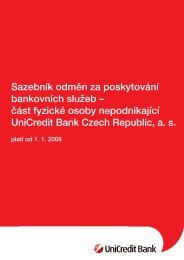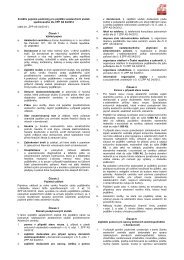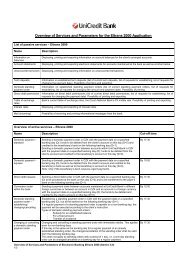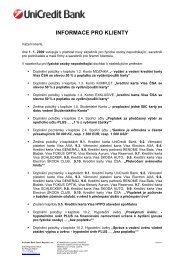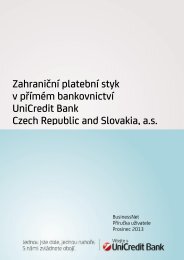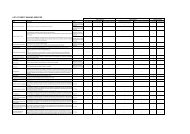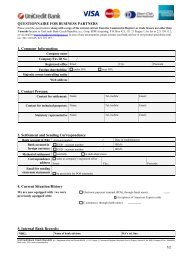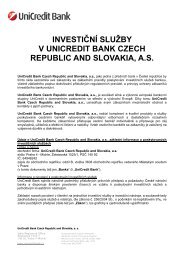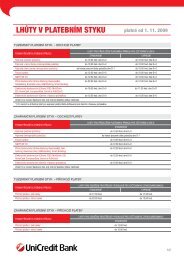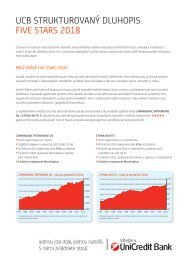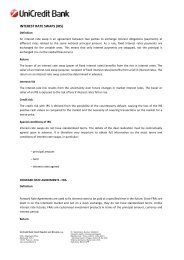Annual report 2004 (PDF, 4141 kB) - Unicredit Bank
Annual report 2004 (PDF, 4141 kB) - Unicredit Bank
Annual report 2004 (PDF, 4141 kB) - Unicredit Bank
Create successful ePaper yourself
Turn your PDF publications into a flip-book with our unique Google optimized e-Paper software.
32 CASH AND CASH EQUIVALENTS<br />
Cash and cash equivalents comprise the following balances with less than 90 days maturity at<br />
balance sheet date:<br />
31 December <strong>2004</strong> 31 December 2003<br />
CZK m<br />
CZK m<br />
Cash and balances with central bank (Note 12) 551 438<br />
Treasury bills (Note 13) 160 560<br />
Due from other banks (Note 14) 11 991 16 427<br />
Trading securities (Note 15) 491 284<br />
13 193 17 709<br />
33 USE OF FINANCIAL INSTRUMENTS<br />
(a)<br />
Strategy in using financial instruments<br />
By its nature the Group’s activities are principally related to the use of financial instruments<br />
including derivatives. The Group accepts deposits from customers at both fixed and floating<br />
rates and for various periods and seeks to earn above average interest margins by investing<br />
these funds in high quality assets. The Group seeks to increase these margins by consolidating<br />
short-term funds and lending for longer periods at higher rates whilst maintaining sufficient<br />
liquidity to meet all claims that might fall due.<br />
The Group also seeks to raise its interest margins by obtaining above average margins, net of<br />
provisions, through lending to commercial and retail borrowers with a range of credit<br />
standing. Such exposures involve not just on-balance sheet loans and advances but the Group<br />
also enters into guarantees and other commitments such as acceptances and letters of credit.<br />
The Group also trades in financial instruments where it takes positions in traded and over the<br />
counter instruments including derivatives to take advantage of short-term market movements<br />
in bond markets and in currency and interest rate. The Board places trading limits on the level<br />
of exposure that can be taken in relation to both overnight and intra-day market positions.<br />
With the exception of specific hedging arrangements, foreign exchange and interest rate<br />
exposures associated with these derivatives are normally offset by entering into<br />
counterbalancing positions, thereby controlling the variability in the net cash amounts<br />
required to liquidate market positions.<br />
Fair value hedges<br />
The Group hedges part of its existing interest rate risk resulting from any potential decrease in<br />
the fair value of fixed rate assets using interest rate swaps (Note 16).<br />
94



